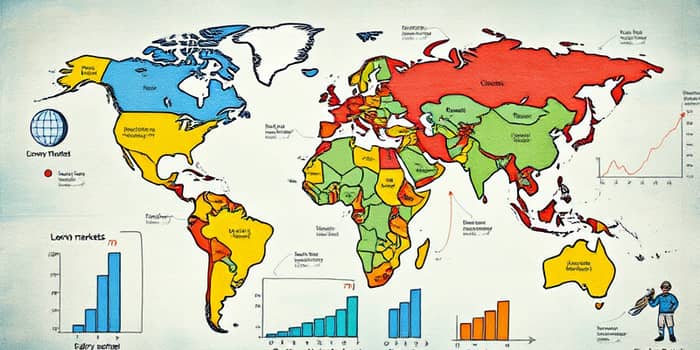
Since the onset of the global pandemic, economies have embarked on varied paths to recovery.
The pace and strength of these recoveries diverge markedly across regions, shaped by local policies, structural factors, and external shocks.
In the aftermath of widespread health and economic disruptions, the world has witnessed an uneven economic recovery across regions.
Factors such as fiscal support, vaccination rates, and supply chain resilience have created distinct recovery trajectories for major economies.
The risk of a two-speed world economy is rising, as advanced economies recalibrate policy and emerging markets navigate capital flows.
As growth drivers and inflation trends diverge, central banks face the dilemma of balancing support against the risk of overheating or stagnation.
The East Asia & Pacific region remains a cornerstone of global growth, yet projections indicate a slowdown to 4.0% GDP growth in 2025, down from 5.0% in the previous year.
Major contributors include China, Indonesia, and Vietnam, while nations like Thailand and Lao PDR face more modest expansions.
Uncertainty remains high, with risks tied to global demand, policy shifts, and supply chain realignments.
China’s transition towards innovation-driven growth and consumption-led demand will be pivotal. Meanwhile, smaller economies must manage external vulnerabilities, including commodity price swings and tourism fluctuations.
Growth in Latin America & the Caribbean is moderating, falling from 2.4% in 2024 to an estimated 2.0% in 2025.
Consumption drives activity, but weak investment and persistent inflationary pressures pose challenges.
Major economies like Brazil and Mexico face a balancing act between taming inflation and stimulating growth.
Brazil’s central bank has paused rate hikes, while Mexico’s monetary authorities maintain caution amid volatile capital flows.
Europe’s recovery has been hampered by aging populations, high public debt, and elevated energy costs.
GDP forecasts have been downgraded amid sluggish growth and trade uncertainties.
Inflation is approaching central bank targets more rapidly than anticipated, yet persistent inflationary pressures in certain markets threaten to unbalance the rebound.
Eurozone recovery is uneven, with Germany’s manufacturing sector underperforming relative to France and Spain’s service-led expansions.
The green energy transition offers opportunities but requires significant capital and coordination for lasting impact.
North America exhibits a mosaic of recovery experiences, shaped by differing policy choices and economic structures.
In Canada, growth remains below pre-pandemic levels and is expected to ease to 1.4% in 2025, as the Bank of Canada may lower rates to 2.75%.
Canada faces demographic headwinds, with an aging population putting pressure on healthcare and pension systems, even as immigration supports labor force expansion.
In the United States, inflation is easing broadly, but housing costs and healthcare spending continue to strain household budgets.
Job growth persists but at a decelerating pace, with the South leading and unemployment remaining historically low despite slight rises.
The United Kingdom outperforms its G7 peers with projected growth of 1.8% in 2025, while grappling with high services inflation and fiscal pressures.
Several cross-cutting themes emerge when comparing regional recoveries:
As we enter 2025, regional indices will continue to reflect the divergence in growth and inflation trajectories.
Optimizing outcomes requires a blend of targeted policy interventions, structural reforms, and international cooperation.
Governments and private sectors must remain agile, adapting to emerging risks such as supply chain disruptions and shifting consumer patterns.
By understanding the unique drivers in each region and leveraging comparative insights, policymakers can craft strategies that build resilience and promote inclusive growth across the globe.
Ultimately, navigating these divergent recoveries will define the economic well-being of populations and the stability of the global financial system in the years ahead.
References













